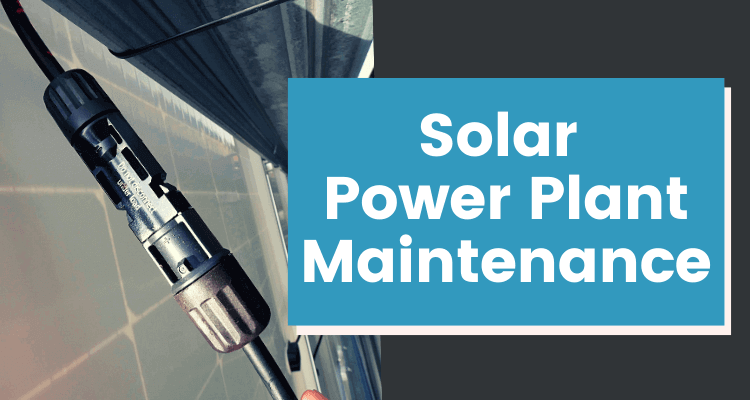Inspection and value retention of solar systems: That’s what matters!
How and how often must photovoltaic systems be maintained to secure long-term yields? What damage to the solar system can be avoided by maintenance? Find out how careful operation is successful.
It is very important to know the target figures expected from your solar plant and to regularly check whether these yield expectations are met. In case of a sudden drop in the yields, the cause must be quickly investigated. Because running times with yield losses can no longer be made up for in retrospect. How much maintenance is necessary to avoid yield losses in the best possible way, while at the same time not generating extra costs?
There is a minimum: as an operator, you have the obligation to operate your solar plant with care. You can fulfil this duty by following the VDE standards, who recommend checking the electrical functioning of a PV system at commissioning and then every four years.
Safety-relevant functions should be inspected in the same cycle via the “DGUV test“, or other local equivalent testing. In the package, the inspection is thus considered standard and appropriate. It must be ensured that no danger emanates from the system.
To what extent further maintenance makes economically sense depends on weighing up the costs and benefits of corresponding services. Some maintenance offers appear to be overpriced or inappropriate if they do not suit your plant size. The rule of thumb is: maintenance costs must be below a potential loss of revenue.
Avoid errors right from the planning phase
In order to avoid cost-intensive improvements, it is advisable to take future maintenance, inspections and performance evaluations into account already during the planning of your investment project. Sttention should be paid particularly to the following points:
- easily accessible components: helps to get fast and efficient maintenance
- clearly documented circuit and assignment diagrams: accelerates and facilitates targeted troubleshooting
- remote monitoring: enables fast and central data evaluation
If there is nevertheless a drop in yield, you must be able to clearly identify possible faults or errors. This often requires more detailed investigations and measurements on the system. To have these results available in case of doubt, they should be carried out by experienced, independent experts.
Initial inspection when investing in existing PV systems
If you invest in a PV system that is already in operation, the documentation may not be sufficient. In this case an initial technical inspection of the system is advisable.
Risks and solutions in all phases
If problems are not detected and rectified at an early stage, this can, in addition to economic effects, pose a safety risk for the plant. In order to prevent possible risks such as damaged diodes, incorrectly installed modules, or shading of individual cells due to soiling, as well as other serious damages such as fire, loss of insurance cover or termination of the operating license, a sound quality assurance concept is advisable. Such concept should cover all project phases: from the planning to the installation and maintenance of the solar power plant.
If you want to commission a maintenance company, this begins with the definition of concrete quality assurance steps in the project and maintenance contracts. For this purpose, a due diligence is used to record the actual situation independently of the installation company. A realistic yield assessment provides orientation. For larger projects, a complete risk assessment can also be necessary.
As soon as the installation has been completed, the status and possible defects should be determined and documented through an independent technical inspection during the formal acceptance.
During the operating phase, annual inspections are recommended, with the focus on yield assurance and optimization. In parallel, the operation should be continuously monitored. In addition to a visual inspection, thermographic inspection offers an efficient means of identifying defects that would otherwise not be immediately apparent. Thermography should be an integral part of an annual inspection.
Sample calculations
Inverter fails
If, for example, the inverter fails with 30 kW (AC) in a high-yielding June, a compensation rate of 8.9 cents/kWh would result in a loss of yield of 500 to 600€. For older systems (e.g. 2010 with 28.4 cents/kWh), the loss would even be around 1,800€.
Degradation of the modules remains undetected
A degradation (PID effects) of the modules can reduce the output of an older system by 5% or more. At 7%, a loss over one year adds up to around 14,000€ if a south-facing 750 kWp system is remunerated at 28.4 cents/kWp (2010 remuneration rate).
In addition to the running costs for operational monitoring (monitoring and surveillance), this is offset by inspection costs. Per inspection by an independent expert, the costs should be less than EUR 1,500 for a system with up to 750 kWp.
This article is a free translation from the article created with the kind support of Dr. Daniel Faltermeier, managing partner, helioconsult GmbH. To read the original version (in German): here.





